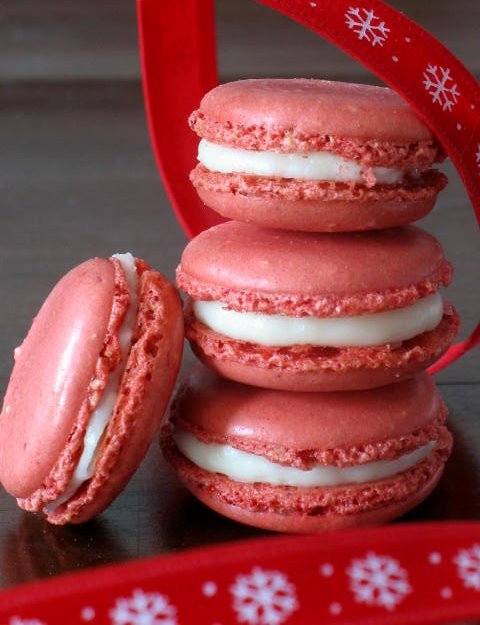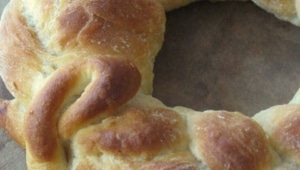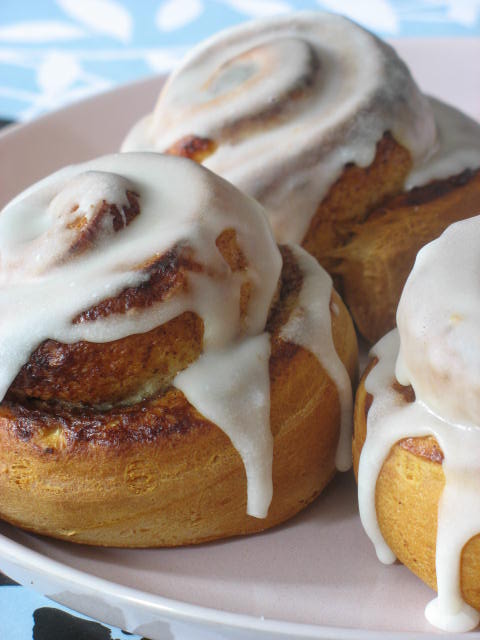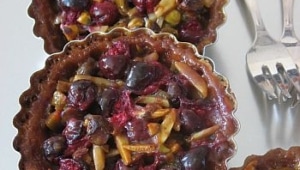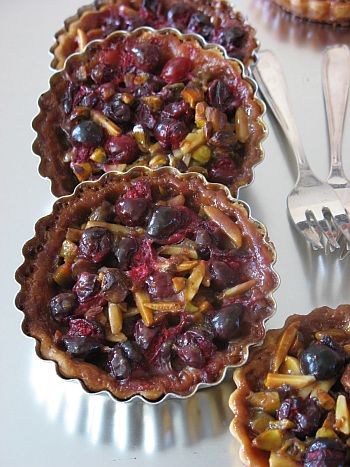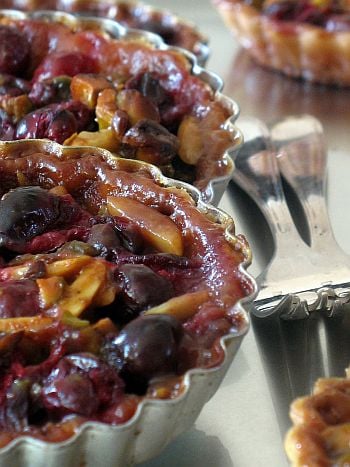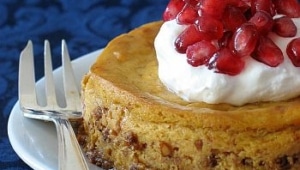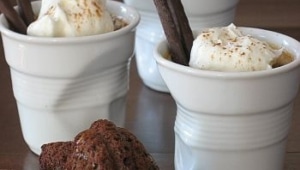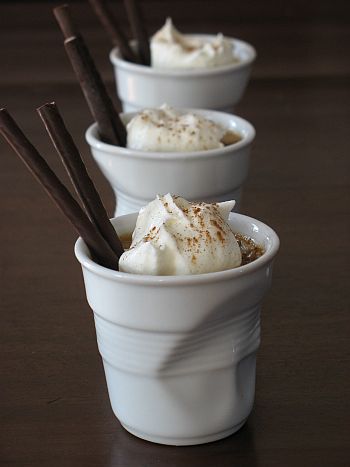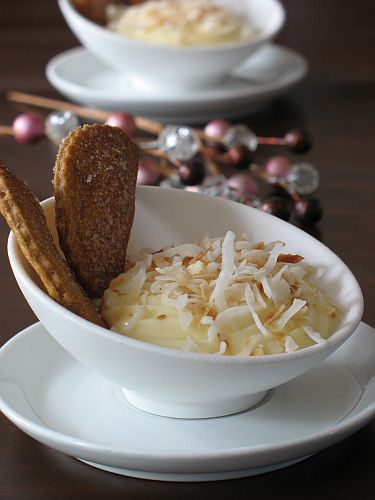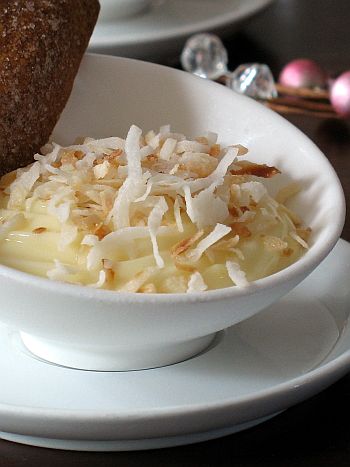
Braid or Couronne
What if I were to tell you I am anti-carbs?….Ahahahahah!!! Well, you reacted the way I expected: a big loud laugh instead of throwing me a stone. Yeah, because let’s face it, telling you that Tartelette is a blog sans carb would be telling you it never snows in Ohio. Where am I going with this? To the latest Daring Bakers’ Challenge, Tender Potato Bread, chosen by this month host, Tanna from My Kitchen In Half Cups.
Bread….Oh there is home made bread here at the house, surprise, surprise! We love bread and are always looking for the next best loaf and now we want Tanna to live on our street too. (gosh, there is a whole lot of bloggers I want as neighbors I just realized!!) Not only can the woman bake but she also knows to pick a very fun challenge. I know for some I am the weirdo down the street who likes to get hand deep in dough and make bread, 4-5 loaves a week…and there are just 2 of us (oh yeah, B. adapted the bread – cheese – salad dinner of the Mrs. without a complaint!) : dried fruit bread, brioche for our breakfasts and a couple of other breads like multigrain, rustic, artisan or European breads. There are a couple of starters in the fridge, in marked containers : Gertie is purple lidded, Bob is green. Gertie, my potato sourdough starter gives me the best bread ever so I was really thrilled to be able to play with another potato bread recipe this month.

Fougasse
Play is the word: sticky dough up to my elbows for about 15 minutes….now talk about some spa treatment!! The recipe calls for 8 to 16 oz of potatoes, the more potato the stickier the dough and mine was about 12 oz raw. I ended up using 7 cups of flour (6-8 cups were suggested) and boy was B. in for a treat of severe looks and mild curses. I know I appear all cool collected and calm on my blog but Lisa will tell you that when I get aggravated well, all that Southern cool goes out the window. When the boy asked if dinner was ready, I think the look I gave him was enough to sent him back to his garage to play or organize or bang on something because I was in the middle of pure sticky heaven. Don’t get me wrong, that was not challenging in itself. The challenging part was to keep everything I touched free of bread goo….I started to wonder how the dough would behave upon shaping.
Tanna gave us a lot of playroom with the shapes and flavors we could give our breads. I decided to go for a French shape first, a fougasse, filled with fresh oregano, a braid, and a fig and feta boule. The epis I made got eaten before I could take pictures so we’ll just have to imagine that one or wait until I do the challenge once again. The beauty of such a sticky dough is that if you mess up while shaping there does not seem to be a problem of over kneading. I think I played with the braid shape three or four times before I was happy and it still turned out tender. The only drawback we had with this recipe was that the bread turned a little tough after it was frozen for a week or so. Ah, what am I saying? It made great toasts, so I guess there isn’t anything bad with this bread.
I want to thank Tanna for choosing such a high quality recipe and being such an awesome host, responding promptly to all Daring Bakers’ inquiries, issues and troubles. Hats off to you!! You make the group proud! Check out the other 300 other Daring Bakers by visiting our blogroll. Thank you Ivonne and Lisa for making it as much fun for me every month!
 Fig and Feta Boule
Fig and Feta Boule
Tender Potato Bread, From Home Baking: The Artful Mix of Flour & Tradition Around the World by Jeffrey Alford and Naomi Duguid
4 medium to large floury (baking) potatoes, peeled and cut into chunks variety of potatoes you might want to use would include Idaho, Russet & Yukon gold (8 to 16 oz)
4 cups water (See Note)
1 tablespoon plus
1 teaspoon salt
2 teaspoons active dry yeast
6 ½ cups to 8 ½ cups unbleached all-purpose flour
1 tablespoon unsalted butter, softened
1 cup whole wheat flour
Put the potatoes and 4 cups water in a sauce pan and bring to boil. Add 1 teaspoon salt and cook, half covered, until the potatoes are very tender. Drain the potatoes, SAVE THE POTATO WATER, and mash the potatoes well. Measure out 3 cups of the reserved potato water (add extra water if needed to make 3 cups). Place the water and mashed potatoes in the bowl you plan to mix the bread in – directions will be for by hand. Let cool to lukewarm – stir well before testing the temperature – it should feel barely warm to your hand. You should be able to submerge you hand in the mix and not be uncomfortable.
Mix & stir yeast into cooled water and mashed potatoes & water and let stand 5 minutes.
Then mix in 2 cups of all-purpose flour and mix. Allow to rest several minutes.
Add yeast and flour to the cooled mashed potatoes & water and mix well. Allow to rest/sit 5 minutes. Sprinkle on the remaining 1 tablespoon salt and the softened butter; mix well. Add the 1 cup whole wheat flour, stir briefly.
Add 2 cups of the unbleached all-purpose flour and stir until all the flour has been incorporated. At this point you have used 4 cups of the possible 8 ½ cups suggested by the recipe. Turn the dough out onto a generously floured surface and knead for about 10 minutes, incorporating flour as needed to prevent sticking. The dough will be very sticky to begin with, but as it takes up more flour from the kneading surface, it will become easier to handle; use a dough scraper to keep your surface clean. The kneaded dough will still be very soft.
As a beginner, you may be tempted to add more flour than needed. Most/many bread recipes give a range of flour needed. This is going to be a soft dough. At this point, add flour to the counter slowly, say a ¼ cup at a time. Do not feel you must use all of the suggested flour. When the dough is soft and smooth and not too sticky, it’s probably ready.
Place the dough in a large clean bowl or your rising container of choice, cover with plastic wrap or lid, and let rise about 2 hours or until doubled in volume. Turn the dough out onto a well-floured surface and knead gently several minutes. It will be moist and a little sticky.
The dough is now ready for you to shape your breads in many different ways:
Divide the dough into 2 unequal pieces in a proportion of one-third and two-thirds (one will be twice as large as the other). Place the smaller piece to one side and cover loosely.
To shape a large loaf: Butter a 9X5 inch loaf/bread pan. Flatten the larger piece of dough on the floured surface to an approximate 12 x 8 inch oval, then roll it up from a narrow end to form a loaf. Pinch the seam closed and gently place seam side down in the buttered pan. The dough should come about three-quarters of the way up the sides of the pan. Cover with plastic wrap and let rise for 35 to 45 minutes, until puffy and almost doubled in volume.
To make a small loaf with the remainder:Butter an 8 x 4 inch bread pan. Shape and proof the loaf the same way as the large loaf.
To make rolls:Butter a 13 x 9 inch sheet cake pan or a shallow cake pan. Cut the dough into 12 equal pieces. Shape each into a ball under the palm of your floured hand and place on the baking sheet, leaving 1/2 inch between the balls. Cover with plastic wrap and let rise for about 35 minutes, until puffy and almost doubled.
To make focaccia:Flatten out the dough to a rectangle about 10 x 15 inches with your palms and fingertips. Tear off a piece of parchment paper or wax paper a little longer than the dough and dust it generously with flour. Transfer the focaccia to the paper. Brush the top of the dough generously with olive oil, sprinkle on a little coarse sea salt, as well as some rosemary leaves, if you wish and then finally dimple all over with your fingertips. Cover with plastic and let rise for 20 minutes.Place a baking stone or unglazed quarry tiles, if you have them, if not use a baking/sheet (no edge – you want to be able to slide the shaped dough on the parchment paper onto the stone or baking sheet and an edge complicates things). Place the stone or cookie sheet on a rack in the center of the oven and preheat to 450°F/230°C. Bake the flat-bread before you bake the loaf; bake the rolls at the same time as the loaf.If making foccacia, just before baking, dimple the bread all over again with your fingertips. Leaving it on the paper, transfer to the hot baking stone, tiles or baking sheet. Bake until golden, about 10 minutes. Transfer to a rack (remove paper) and let cool at least 10 minutes before serving.
Dust risen loaves and rolls with a little all-purpose flour or lightly brush the tops with a little melted butter or olive oil (the butter will give a golden/browned crust). Slash loaves crosswise two or three times with a razor blade or very sharp knife and immediately place on the stone, tiles or baking sheet in the oven.
Place the rolls next to the loaf in the oven.
Bake rolls until golden, about 30 minutes. Bake the small loaf for about 40 minutes. Bake the large loaf for about 50 minutes. Transfer the rolls to a rack when done to cool. When the loaf or loaves have baked for the specified time, remove from the pans and place back on the stone, tiles or baking sheet for another 5 to 10 minutes. The corners should be firm when pinched and the bread should sound hollow when tapped on the bottom.
Let breads cool on a rack for at least 30 minutes before slicing. Rolls can be served warm or at room temperature.
